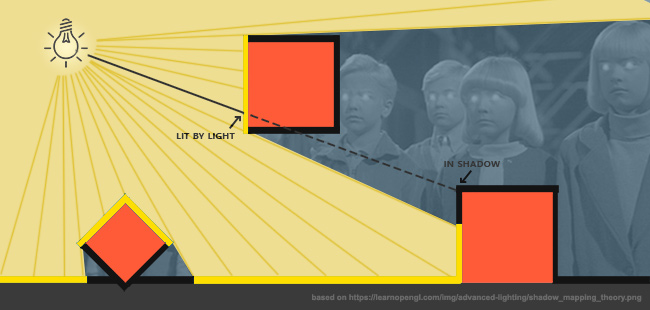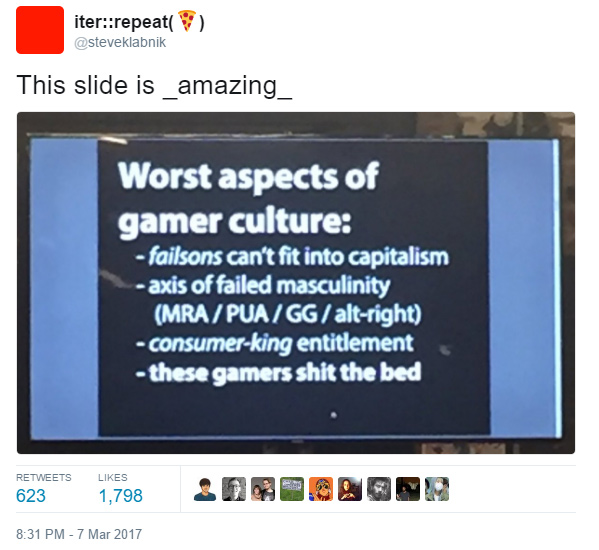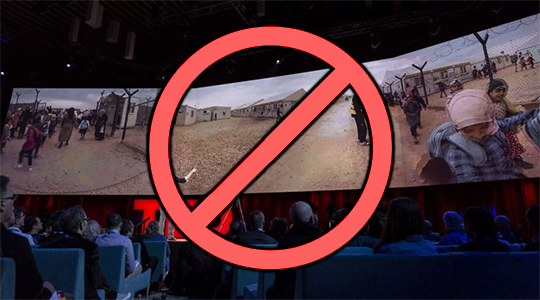Due to a reader's request, Radiator Blog has finally joined the 21st century and now offers an e-mail subscription service via FeedBurner integration with Blogger. (FeedBurner is an old Google acquisition that scrapes and re-formats RSS feeds. RSS feeds kind of fell out of fashion like 10 years ago, but you can still access this blog's RSS / Atom feed directly if you want.)
To subscribe for e-mail notifications on new posts and such, you can type your e-mail address into the sidebar widget near the top-right of this page, or the footer widget at the very bottom of this page. Or use the sign-up form on the FeedBurner website itself. It's up to you. Here at Radiator, we're all about choice.
I will not share your e-mail address with anyone... not even with myself, because I'm probably not going to login to the FeedBurner dashboard ever again. It's all automatic now. Ah, the wonders of technology...
Monday, April 17, 2017
Tuesday, April 11, 2017
Spring 2017 progress report
I usually plan my project work roughly month by month, swapping out projects based on timeliness / recent progress. Here's my plan for the next few months:
- My historical bathroom sex game The Tearoom will hopefully be finished and released by the end of this month / early next month. Most of the main functionality is implemented, I just need to fill-in some more content and do more user testing. Will hopefully have a lot more to say about this soon.
- I need to dust-off my sexy strip-Go game, tentatively called AlphaGogo. I aim to finish and release it near the end of May / first week of June, soon after the next Google DeepMind AlphaGo tournament ends in China. When I last worked on it, I had some intermediate-level Go AI working on a 9x9 board. The idea is that it'll teach you how to play Go, and then the sexy "Go daddy" coach will take his clothes off with every match you win. Go usually has a reputation for being really abstract and dry, so I wanted to inject it with some humor and intimacy.
- I have another project marinating on the side, it's a sexy pole-dancing stripping game, and it's a possible collaboration with a musical artist. One crucial touchstone for this one is the 1983 film Flashdance, which has a gorgeous iconic burlesque scene -- but then the other 90 minutes oddly condemns stripping and sex work as immoral? It has some strange politics and sexual anxiety that never completely evaporates from the whole "sexy dance" genre film lineage, even today.
- Over the summer, I want to go back and finish Good Authority, a critical city-building sim inspired by the biography of Robert Moses called The Power Broker. People enjoyed the initial prototype, but they also didn't even get to the second half of the game, or even knew half was missing -- so we're trying to re-design the core gameplay to alleviate that. More on that later, when we've figured out more of it.
Wednesday, April 5, 2017
"If you walk in someone else's shoes, then you've taken their shoes": empathy machines as appropriation machines
EDIT, 23 June 2017: want to know more about "cultural appropriation"? I wrote a post about it, where I also try to recap a lot of conversations around cultural appropriation happening that month. Read it here.
In a 2015 TED talk (pictured above) VR filmmaker Chris Milk claimed that virtual reality could be the ultimate "empathy machine". Instead of fading away into irrelevance like most TED talks, this concept of the VR empathy machine has somehow survived into 2017. VR boosters like the United Nations' VR program and influential podcast Voices of VR continue to push this line of thinking.
I'm here to argue absolutely in the strongest terms: I am against the promise of any claim to a "VR empathy machine", and I am against it forever.
The rhetoric of the empathy machine asks us to endorse technology without questioning the politics of its construction or who profits from it. Empathy is good, and VR facilitates empathy, so therefore VR is good -- no questions please. (And if you hate VR, that means you hate empathy!) It's a disturbing marketing strategy, and I hope it's obvious how making a refugee tourism simulator your "flagship" VR experience can come across as an extremely cynical use of pain and suffering to sell your product.
I also doubt any empathy machine supporters have ever been the actual "target" of an actual empathy machine. Ironically, as empathizers, they seem totally unable to empathize with the empathized, so let me spell this out. The basic problem with empathy machines is what if we don't want your fucking empathy?
Thursday, March 30, 2017
Vote "YES" on Radiator 3 for Steam Greenlight!
So I've been giving some thought as to what a sequel to Radiator 2 would look like... and I think it'll be a similar format, with a flagship game + other bundled scenes in the same package. It's fairly straightforward to put them all together in one deployment, which is probably one nice advantage to making all my games in the same Unity project folder.
Introducing: the highly anticipated sequel Radiator 3. (Steam Greenlight page is here.) Right now the only segment that's definitely going into it is Rinse and Repeat, I'm still deciding what else I'd want to include with it... What will be new in Radiator 3?
- Steam Achievements and gamepad support
- SteamVR support! Probably targeting a "Standing" spec, for Oculus Touch / Vive support.
- remastered super duper ultra high HD graphics and hair physics
- ... and so much more!
Tuesday, March 28, 2017
Lighting theory for 3D games, part 5: the rise and fall of the cult of hard shadows

Last time (part 4), we ended with the idea that video game lighting is a carefully assembled pile of hacks / effects that hopefully seems like a unified phenomenon of light. It might seem annoying to fuss over many details all the time, but this bespoke workflow exists because we need so much control to make sure the lighting calculations doesn't slow our game's framerate.
One of the most "expensive" (computer-intensive) parts of 3D video games is rendering shadows. To calculate a shadow in a video game, we must test-fire many light rays out from the light source. If these rays hit anything (see diagram above) then that means the light casts shadows past that object. To give you an idea of how much we sacrifice to shadows, Crytek said in a 2013 SIGGRAPH talk that they offer ~20% of their frame budget (5-7 FPS out of 30 FPS) to the shadows. (20% of their entire game! just for shadows!)
Since shadows are so expensive to do, it's impressive when we manage to do it anyway. But that also means we want shadows to pull their weight and help sell the game, to justify the work we put into them. We worship shadows while praying for something in return.
The cult of hard shadows began on February 21, 2001, at the Macworld conference in Tokyo:
Tuesday, March 21, 2017
"Take ecstasy with me": a manifesto for Gay VR

Before I explain what the heck I mean by "Gay VR", let's review why Gay VR would be necessary. I gave a MVR talk on this topic at A/D/O a few weeks ago, and someone tweeted my slide above and it went mildly viral. A quick explanation:
- "failsons" (failure + son), coined by popular "dirtbag left" podcast Chapo Trap House, are a particular type of 20-30-something men who have failed to fit into capitalism for whatever reason -- they don't have promising jobs, or careers, or relationships, or futures -- and they definitely feel the shame of it. When they hit rock bottom like this, do they blame capitalism and start listening to Chapo Trap House, or do they blame women + people of color and they join some Reddit hate mobs?
- But when they buy video games, the right-wing failson finally fits into capitalism in some small way, and so they stake their self-worth on it. Instead of philosopher-kings, they are consumer-kings, who think they're so good at consuming video games that they can impose their radical conservative racist misogynist politics on the rest of gamer culture...
- ... and they basically succeeded, thanks to tacit support from the game industry. It's now way too late to reverse this deeply unhealthy attitude toward art and media, and gamer culture is never going to get "better." These toxic conservatives have basically shit the bed, and now that shit will stay there forever.
Thursday, March 16, 2017
Bleeding between alternate realities in Metal Gear Solid 5 and other open world games
I was playing the open world stealth game Metal Gear Solid 5: The Phantom Pain (2015) and I kept failing Mission 33 ("Subsistence: C2W")... The "Subsistence" label means it's a remix of a past mission, but this time you have to complete the mission without any starting loadout, and rely purely on whatever equipment you find after you begin the mission.
The goal of C2W is to destroy some buildings, but "Subsistence" means you don't begin with any explosives -- and once you start attacking the base, they call-in an enemy helicopter that will kill you very quickly. So your two options are (a) sneaking around and clearing out the base quietly so you can destroy the buildings in peace, or (b) finding some heavy weapons (conveniently, some nearby guards carry rocket launchers) and quickly blowing everything up and escaping before the helicopter kills you.
I kept failing with either strategy, so I decided to look up some tips. The online guide suggested a rather dishonorable trick... (1) destroy the nearby anti-air radar station while in "free roam" mode, outside of the mission; (2) then, finally start the mission, set your own helicopter deploy point right on top of your mission objective; (3) and basically kill everyone with the helicopter's giant overpowered chain gun, easily earning the top S-Rank rating for your performance.
My (wrong) assumption was that changing the world in "free roam" mode would not change the world in "mission" mode. In most cases, this was still true... except in this one instance, the radar station was leaked between alternate realities.
Monday, March 13, 2017
Theorizing local games cultures in a post-TIGSource era
Colin Northway tweeted this about a week ago:
As Colin implies, I suspect there is actually no real equivalent of a central "cultural nexus" like TIGSource today. In fact, I've been in on the ground floor of several attempts to make new TIGSource-likes, such as Super Friendship Club and Makega.me, and both of them eventually petered-out in the end for one reason or another. I'm still not sure why, but maybe it's possible that internet forums are a poor fit for what we need these days?
The indie games moment arrived, and has now stabilized into a satellite commercial industry of the game industry. We don't need a central place like TIGSource to imagine it or to advocate for indies to exist. Commercially indie showcase events like Day of the Devs, The MIX, and Indie Megabooth have been been running for a while and will probably keep running.
Today, what would be a public game organization's "mission" now? Everyone has so many different needs and concerns. It's kind of absurd that we even imagined one global "public" that TIGSource was supposed to serve? Local games community problems here in New York City are very different from local problems in, say, Pittsburgh or Capetown or Teheran or Shanghai. One single internet place cannot hope to address all of that.
Many local communities and friend groups have Slacks and chatrooms, but most of these are private and unlisted -- they don't have the "public" face that TIGSource provides / provided. What, are you going to invite Colin Northway to your Slack now? Even if he accepted the invitation, he likely wouldn't stay very long, because Slack requires constant (hourly? minute-by-minute?) engagement and labor to function as a community -- and it'd still be difficult for Colin to understand the tone of your Slack, or what it's really about.
To me, a public games culture should serve two functions: (1) help a local community cohere together, and (2) articulate that community's voice(s) and concerns to the rest of the world.
This GDC I strongly felt there's a large movement of young indies that I know nothing about.— ColinNorthway (@ColinNorthway) March 8, 2017
Is there a cultural nexus I can visit?
As Colin implies, I suspect there is actually no real equivalent of a central "cultural nexus" like TIGSource today. In fact, I've been in on the ground floor of several attempts to make new TIGSource-likes, such as Super Friendship Club and Makega.me, and both of them eventually petered-out in the end for one reason or another. I'm still not sure why, but maybe it's possible that internet forums are a poor fit for what we need these days?
The indie games moment arrived, and has now stabilized into a satellite commercial industry of the game industry. We don't need a central place like TIGSource to imagine it or to advocate for indies to exist. Commercially indie showcase events like Day of the Devs, The MIX, and Indie Megabooth have been been running for a while and will probably keep running.
Today, what would be a public game organization's "mission" now? Everyone has so many different needs and concerns. It's kind of absurd that we even imagined one global "public" that TIGSource was supposed to serve? Local games community problems here in New York City are very different from local problems in, say, Pittsburgh or Capetown or Teheran or Shanghai. One single internet place cannot hope to address all of that.
Many local communities and friend groups have Slacks and chatrooms, but most of these are private and unlisted -- they don't have the "public" face that TIGSource provides / provided. What, are you going to invite Colin Northway to your Slack now? Even if he accepted the invitation, he likely wouldn't stay very long, because Slack requires constant (hourly? minute-by-minute?) engagement and labor to function as a community -- and it'd still be difficult for Colin to understand the tone of your Slack, or what it's really about.
To me, a public games culture should serve two functions: (1) help a local community cohere together, and (2) articulate that community's voice(s) and concerns to the rest of the world.
Subscribe to:
Posts (Atom)


